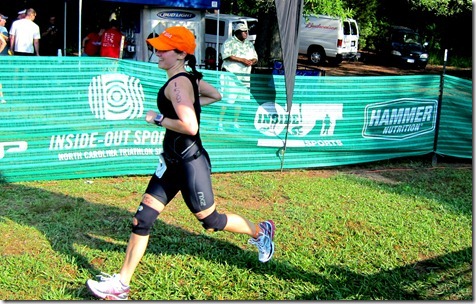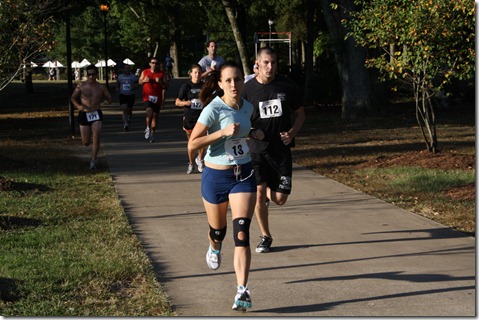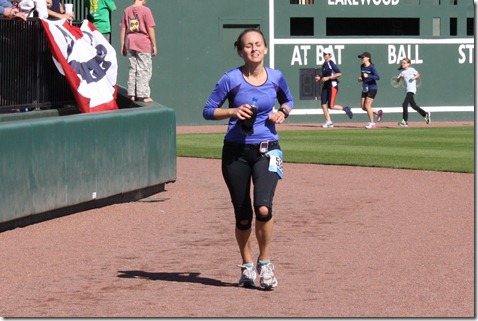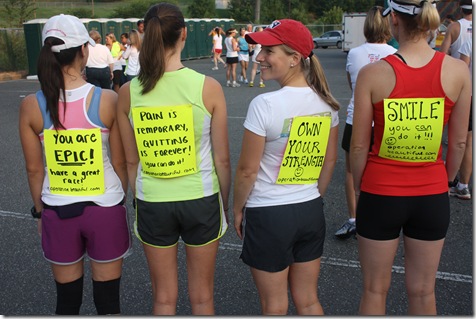… Also known as – how not to crash and burn!

Many runners – newbies or vets – struggle with pacing. It’s far too easy to come out fast and blow all your energy at the beginning of a run (or race). Trust me – I’ve done it numerous times (pacing can be a hard lesson to learn). This is actually a topic we discuss at Girls on the Run because many of the girls struggle with even pacing. We explain pacing to the girls in very simplistic terms (basically, slow and steady wins the race; the rabbit ultimately gets left behind). But, of course, most adults know that pacing in the real world is a little more complex.
Here are my suggestions for finding that perfect pace:
Walking doesn’t mean you aren’t keeping pace: Know that taking walking breaks doesn’t necessary mean you can’t maintain an even pace. There are two ways to think about pacing. The first way is to strive for a consistent miles per hour (MPH) over every single minute. This means you’d run 1 mile in 10 minutes at exactly 6.0 MPH for the entire mile. Alternatively, you can think about pacing over the whole mile. Maybe you run for 2 minutes at 6.5 MPH, take a 30-second walking break, pick up your speed again, and you can still end up running 1 mile in 10 minutes. The Rolling Intervals Treadmill Workout is a perfect example of this. Sometimes, I ran 7.5 MPH and other times, I sped along at 6.0 MPH, but it still worked out to a little faster than a 10-minute/mile.
Many people find it easier to use regular walking intervals than jog the entire time and actually end up faster overall. So don’t get caught into the trap of ‘pacing means running the same MPH the entire time.’ You can think it over a mile or even over an entire time.

This race was a great example of extremely poor pacing.
Don’t compare yourself to others: That being said, it’s very easy to get caught up in ‘my friends run this fast’ or ‘that blogger runs that fast.’ Don’t set your desired pace based on what other people can do. YOUR pace is something that you can comfortably maintain for the entire distance. Your perfect pace might vary day-to-day.
Consider getting a GPS-enabled watch: If you want to get scientific about it, one way to know your exact pace is to invest in a GPS watch, such as the Garmin 305. The Garmin uses satellites to calculate your pace per mile. By turning the AutoLap feature on, you can even see a mile-by-mile breakdown at the end of your run that will tell you how far you went, the speed for each mile, and your top speed each mile. You can also roughly guesstimate your pace by driving your run route, noting each mile marker, and keeping track of what time it is when you hit the mile marker.
Consider basing pace on how you feel: Instead of pacing based on time, you can pace based on perceived effort. I try to run longer races at 75% perceived output. In my mind, 0% is laying on the couch, 50% is walking, 90% is how I run the last 0.5 mile, and 100% is sprinting to the finish line. My 75% output might be a 9:30-minute/mile at the beginning but may drop to 10:30 at the end. Personally, I like this method because it keeps me from focusing too much on time, which can make me crazy.

This race is an example of really effective pacing based on my perceived effort.
Learn what different paces feel like on the treadmill: Although I hate being stuck on the treadmill, I do have to say it’s great for pacing. When running on the treadmill at a comfortable, maintainable pace, notice how your legs feel, the rhythm that you strike the ground, how often you need to breathe, etc. Then, try to recreate that entire scenario on the road.
Listen to the right kind of music: Be careful! Music highly influences how fast you run. Music with too many beats per minute will encourage you to speed up; music with 80 – 90 BPM are better for warm-ups. Runner’s World has a great article on selecting music based on BPM.
Set realistic goals: The biggest pace-blower? Setting unrealistic goals. If you can’t run 3 miles in 30 minutes, don’t think you’ll be able to run a 5K in 28. For more info on goal-setting, check out How to Set Race Goals (and Not Drive Yourself Crazy) Part I and Part II.
Do speedwork: Regularly doing speedwork will help you become faster and eventually increase your overall pace (as will more training time). Rolling Intervals Treadmill Workout is a good example of speedwork.

How do you pace yourself? A watch? How you feel? Any epic crash-and-burn stories to share?

I use my iNike to help pace. I secretly get a thrill at people blowing by me at the start of the race and then passing them towards the end because they are spent. Does this make me a bad person…runner..?